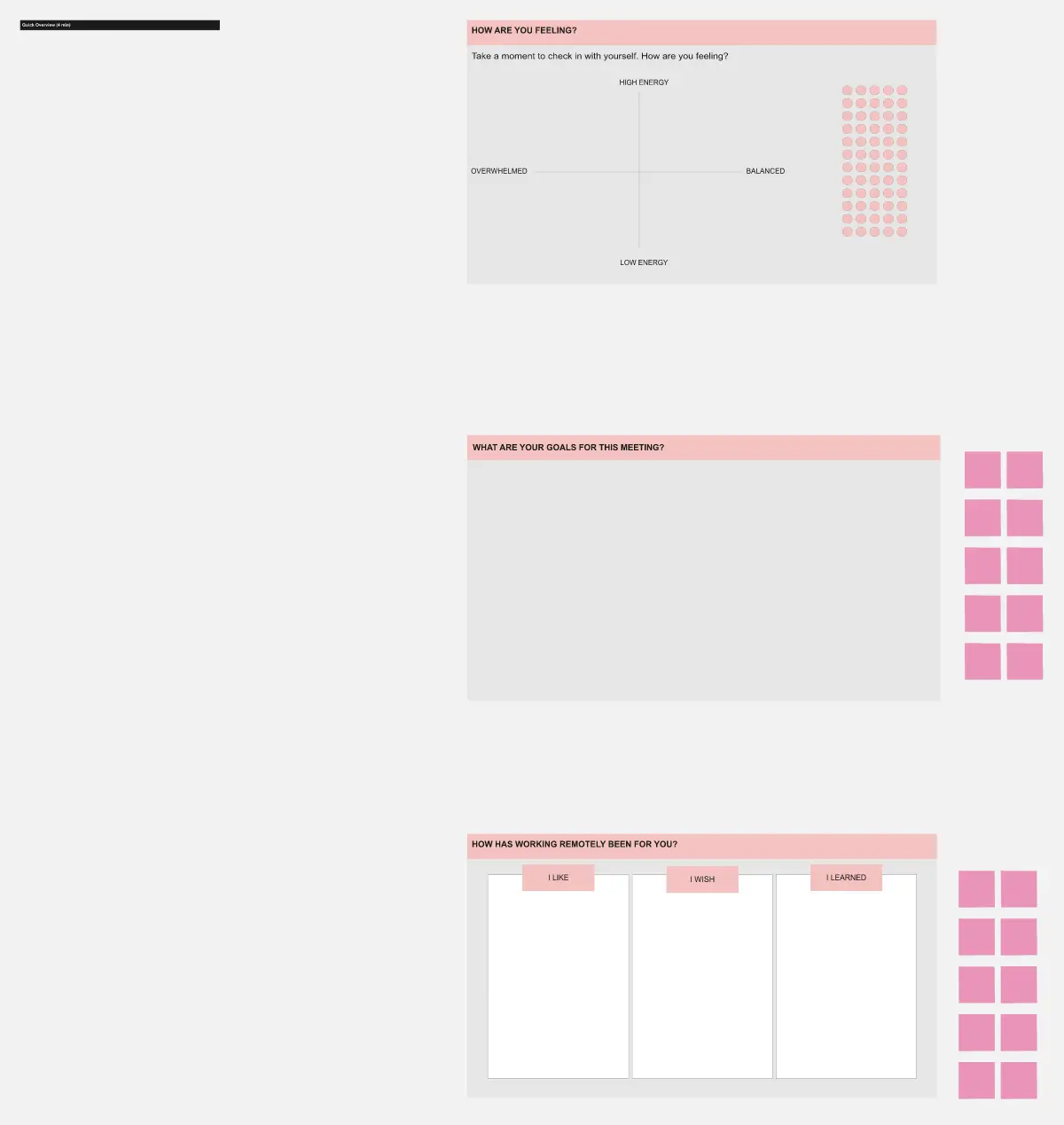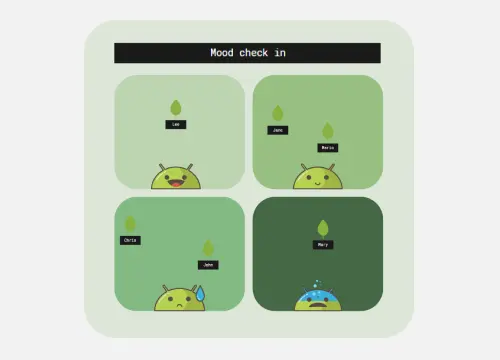We created the Emotions Wheel Ice-breaker for our bi-weekly all-hands meeting. At this meeting, our US and European teams come together to kickoff the week, to share the most important news and connect with each other. After shifting to remote, that last piece was missing — it’s so challenging to connect and feel supported by your team while remote in a usual presentation-like meeting. So we decided to start the call with a real human check-in: How do you feel? But really, how do you feel today?
Naming our emotions helps us to raise self-awareness, feel and express empathy, and connect to each other. Use this Emotions Wheel Ice-breaker template when you need to build a foundation for an important conversation with your team, and to build the bridges across different teams and locations. This template also helps to acknowledge the variety of perspectives and experiences we all go through. Experiencing the same event, we all react to it differently.
How to use Emotions Wheel Ice-breaker: simply share the template with your team, ask them to grab a dot and place it on a section of the Wheel that illustrates their emotional state the best. Play a relaxing gentle music on the background. If you have a small team, participants usually found it useful to switch off the cursors and not to share the screen for them to feel safe to share and not being watched. Once everyone placed the dots, bring the picture up via screen share and acknowledge all variety of emotions marked. “It’s perfectly normal to feel this way, thank you for being authentic and checking in”. If the mood feels right for sharing, you may choose to invite a few volunteers representing different sectors of the wheel to share why they feel so.
Emotion Wheel Icebreaker Template FAQs
How many emotions are on the emotions wheel?
Miro’s Emotion Wheel Icebreaker Template contains an emotion wheel with six core emotions, each leading to twelve different emotional states. The original emotions wheel created by Robert P. had eight core emotions, and each emotion would result in two other emotional states.
Can you use the emotion wheel in the classroom?
Many educators and teachers use the emotion wheel as a teaching resource in the classroom. It helps students to connect to their emotions and to identify and communicate their feelings in a more accurate way. The emotion wheel can also help teachers create an inclusive learning space where students feel seen and heard.






